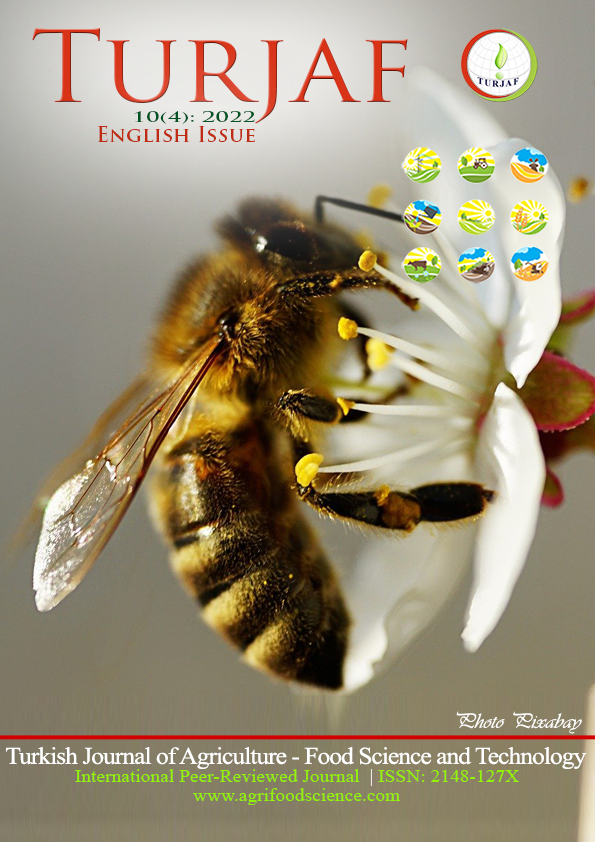Antimicrobial Activity Of Garlic (Allium Sativum L.) In The Preservation Of Merguez, A Traditional Algerian Sausage
DOI:
https://doi.org/10.24925/turjaf.v10i4.613-620.4669Keywords:
Garlic, Antimicrobial effect, Aerobic bacteria, Sausages, Refrigerated storage.Abstract
The objective of the present study is to determine the microbiological quality of Merguez-type sausages prepared and sold locally from meat offal and to study the antibacterial activity of fresh garlic (Allium sativum) during conservation at 4 °C. Thus, fifteen representative samples of sausages are taken randomly from several butcher's shops in the commune of BBA, Algeria, then subjected to a bacteriological examination with reference to the standards established by the Algerian Ministry of Public Health. Bacteriological analysis revealed the presence of 6.88 105 CFU.g-1 of total aerobic bacteria, 5.39 105 CFU.g-1 of total coliforms, 2.23 105 CFU.g-1 of fecal coliforms, 2.43 103 CFU.g-1 of Escherichia coli and 1.8 105 CFU.g-1 of coagulase positive staphylococci, values higher than Algerian standards. The Addition of fresh garlic as an antibacterial preservative at concentrations of 0.06, 0.12, 0.18 and 0.24g.g-1 to ground beef samples and stored in the refrigerator at 4 °C for 15 days. The addition of garlic to Merguez reduced significantly the presence of different bacterial groups during their refrigerated storage, compared to untreated meat by bringing it below the standards defined in the material. Thus, the use of garlic as a food additive at a concentration of 0.12 g.g-1 was sufficient to obtain levels under Algerian standards equal to 1.8 104 CFU.g-1 of total aerobic bacteria, 9.48 103 CFU.g-1 of Total Coliforms, 3.68 103 CFU.g-1 Fecal Coliforms, 4.56 102 CFU.g-1 of E.coli 2.39 104 CFU.g-1 of coagulase positive Staphylococci. Through this study, we can conclude that adding garlic to Merguez reduces the aerobic bacterial load and thus increases the shelf life in a refrigerated at 4 °C.Downloads
Published
30.04.2022
How to Cite
Hanane, A., Meriem, N., & Noureddine, R. (2022). Antimicrobial Activity Of Garlic (Allium Sativum L.) In The Preservation Of Merguez, A Traditional Algerian Sausage. Turkish Journal of Agriculture - Food Science and Technology, 10(4), 613–620. https://doi.org/10.24925/turjaf.v10i4.613-620.4669
Issue
Section
Research Paper
License
This work is licensed under a Creative Commons Attribution-NonCommercial 4.0 International License.









